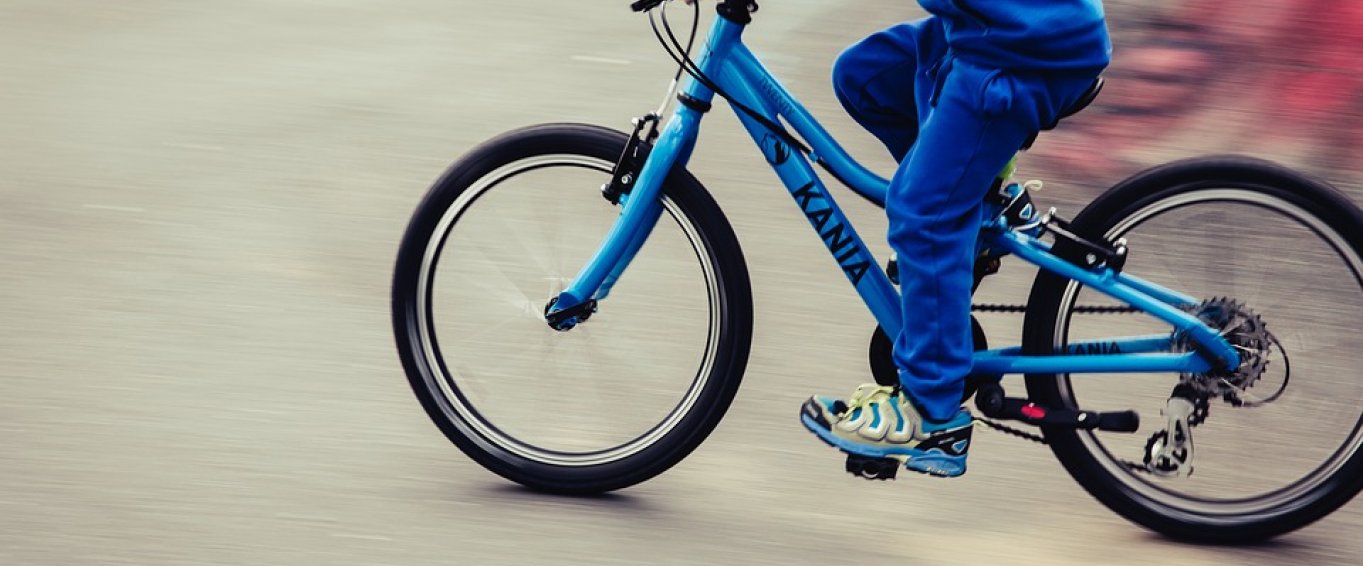Bicycle Safety - 7 Common Myths & the Facts Behind Them

Learning to ride a bike is a major developmental milestone for children. It's not just a sign of physical development - indicative of evolving balance, agility and coordination - it's also important for sense of self and independence. A child's first bike is their first vehicle; their first opportunity to be responsible for their own safety in a fast moving world.
Typically, children learn to ride a two wheeled bike (without stabilisers) between the ages of five and eight years. Alongside guidance on balancing, braking and pedalling, they also need clear instructions on basic road and cycling safety. Unfortunately, there are some pervasive myths about cycling which often cause confusion for families.
Let's take a look at some of these misconceptions and find out what children really need to know about bike safety.
Myth 1: Children don't need to wear a helmet if they're only riding up and down the street.
Reality: The majority of bike accidents involving children happen close to home. Even with supervision, there's still a risk of sudden crashes and collisions. Wearing a helmet is the single best way to ensure accidents don't become emergencies. Plus, even in situations when a helmet seems unnecessary, asking a child to wear one reinforces the message to make head protection a habit.
Myth 2: Any type of helmet can provide protection. It doesn't need to be a cycling helmet.
Reality: Whether a child is learning to ride or has spent years cycling, they need a helmet designed for the activity. This means a proper cycling helmet with an adjustable chin strap. It should be compliant with UK or European safety ratings (look for the CE mark). Only a bicycle helmet provides the right degree of protection for the back and front of a child's brain.
Myth 3: It's better for a child to have a bike that's slightly too big so they can grow into it.
Reality: This is a common misconception among families with younger children. Some see it as a way to save money but the notion is a fallacy. Not only is an oversized bike dangerous: it's unlikely to last much longer than a perfectly sized one unless it's grossly, dramatically oversized! And that would be very dangerous indeed. There is a risk of children losing control if they can't place the balls of both feet on the ground while sitting stationary on a bicycle seat.
Myth 4: It's safe for a child to cycle at night if they're wearing reflective clothing.
Reality: While it's not illegal for children to cycle after dark, it is strongly discouraged by almost all cycling organisations. It can be very difficult for vehicles to see children even when they're wearing fluorescent clothing. Riding on or close to roads at night requires special skills and equipment, neither of which are suitable for youngsters.
Myth 5: Children don't need to use hand signals. They should always keep their hands on the bike.
Reality: Children don't need to be riding alongside traffic to require an awareness of turn signals. If they're crossing roads (or spending any amount of time in the road, no matter how briefly), they should know how to signal their intentions to motorists. If a child cannot signal without losing control of their bike, they should not be cycling on or close to roads.
To indicate a turn, cyclists must hold the corresponding arm straight out to the side (left turn, left arm).
To indicate a sudden stop, they should hold their hand straight up in the air.
To indicate slowing, they should hold one arm slightly behind them and point it at the ground.
Myth 6: When there's no cycle path or pavement, it's safer to ride against oncoming traffic.
Reality: We want to emphatically stress: riding against the direction of traffic is never a safe way to cycle. No matter the type of road or level of congestion, you should always move alongside motorists. Just under a quarter of all collisions with cars happen because cyclists are riding against traffic. It can be very confusing for vehicles. Please don't teach children to travel in this way.
Myth 7: Road safety rules aren't really for children. They rarely need them and should just focus on having fun.
Reality: Parents may limit riding to a single stretch of pavement or rural cycling trails. Its still important to teach children the rules of the road. There are circumstances in which a child who's not used to riding close to traffic might find themselves doing just that - and knowing how to signal, turn and enter and exit roads safely could save their life.
Safe cycling is a great way for young people to stay active and meet the 60min physical activity target (per day). Click here for more advice on keeping kids active at school. Or read our blog on healthy meals for tips on serving veggies to fussy eaters.
Amaven Healthy Schools! Log in to your portal to download an exclusive Road Safety Quiz.